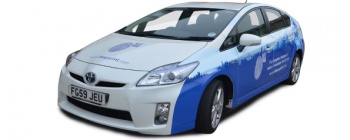
Cranky Prius...
Having trained hundreds of technicians on Hybrid vehicles it is always good to hear that our efforts are worthwhile and that Hybrid vehicles are being repaired in the aftermarket. I recently had a call from one technician who had attended a Blue Print hybrid training course. He had a 2008 Gen 2 Toyota Prius in the workshop which drove ‘very slowly’.
The engine management light was on and the battery indicator in the centre screen was showing empty. He had scanned the Prius and retrieved DTC ‘P0A0F - Engine Failed to Start’. “But it starts and runs for about 15 seconds then cuts out” he said bewilderedly. “Are you sure it runs?” I asked. “Smooth as silk but only for about 15 seconds and then it cuts out” he repeated.
I asked him to go back in with the diagnostic tool and give me some High Voltage battery data. The Battery State of Charge (SOC) was down to just 18%, which is critically low; the normal SOC ranges between 30% and 80%.
I asked him to put the car into ‘Ready Mode’ and when the engine starts, to feel for heat at the exhaust pipe. He did this and told me it was cold. Therefore no combustion was taking place.The engine in the Prius is started by Motor Generator 1 (MG1) in the transmission. During start-up, the valve timing is adjusted so that the inlet valve is closed at 78° before TDC which gives very light compression and with the throttle open, very little pumping losses on the induction stroke.
Toyota calls this the ‘Atkinson Cycle’, which gives improved mechanical efficiency and is deployed under light load. MG1 cranks the engine at 1,200rpm and to anybody listening it sounds just like the engine is running. It wasn’t of course and the engine stops cranking when a non-start is detected. So now the mystery was solved, but the bad news was that the battery was very low on charge and our friend now had the job of diagnosing the non-start problem without too many chances to crank the engine.
This is an unusual situation for a technician and a real test of his diagnostic skills. All credit to him, the fault turned out to be an ignition coil wiring issue which he rectified. The engine started and the battery was soon up to a reasonable SOC.
Have you ever experienced something like this that you’d like to share, or have any comments?
If so, then by all means contact jim.gilmour@bilsteingroup.com


 Click here to open the navigation menu
Click here to open the navigation menu